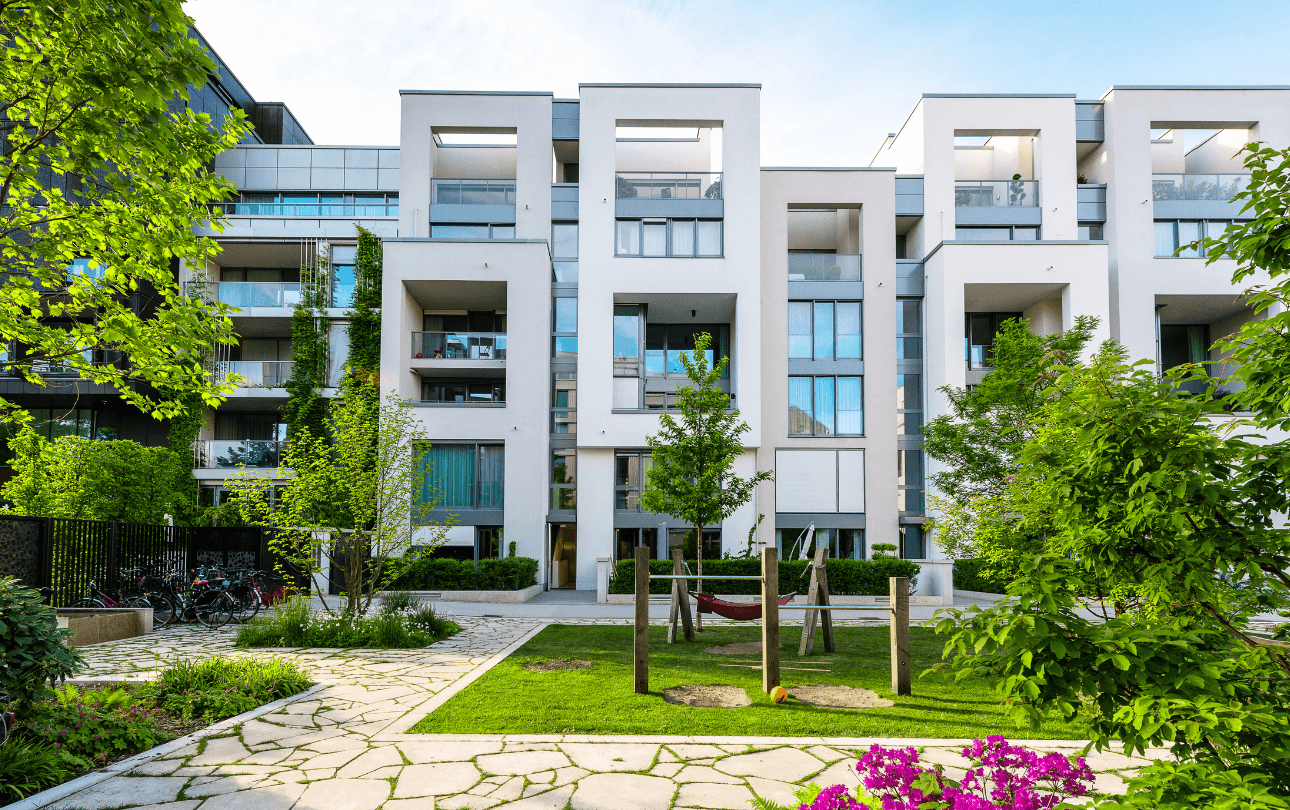Historically, one of the most important pieces of data landlords have used to evaluate an applicant’s financial ability to cover rent is the rent-to-income ratio. However, changing economic climates, global financial market upheaval, and changes in the way that landlords and renters do business have all combined to make some landlords question whether rent-to-income is still a useful metric to calculate by - or if there are other factors that matter more.
By understanding rent-to-income ratio – how to calculate it, and its strengths and weaknesses – as well as other options for determining whether a potential resident qualifies, landlords can make better decisions about who to rent to, and how much rent they should charge.
What is the rent-to-income ratio?
The rent-to-income ratio measures the amount of income a prospective resident has compared to their proposed monthly rent payments. Traditionally, this is an essential indicator for landlords to measure when it comes to evaluating the financial strength of a potential resident.
The rent-to-income ratio is most commonly expressed as a percentage, and the standard “rule” is that an applicant's rental payments should not exceed 30% of their gross monthly or yearly income - that means their rent-to-income ratio needs to be below 30%. This industry standard was first put in place by the National Housing Act of 1937, which aimed to make suitable housing more affordable for low-income families, and after a couple of increases, it was eventually set at 30% in 1981. However, recent developments and shifting economic climates in many areas of the country have made this “rule” less of a rule, and more of a very loose guideline.
How do you calculate rent-to-income ratio?
The easiest way to calculate rent-to-income is simply by dividing an applicant’s proposed monthly rent payment by their monthly income - and then multiplying by 100 to get a percentage:
(Monthly Rent Payment / Monthly Income) x 100 = Rent-to-income ratio %
For example, if you have an applicant who earns $4,000 per month and is looking for an apartment that costs $2,500 a month, you can calculate their rent-to-income ratio as:
($2,500 / $4,000) x 100 = 62.5%
This means that the above applicant would not qualify, because you are looking for a rent-to-income ratio of below 30% (meaning, essentially, that their monthly rent payment does not take up more than 30% of their monthly paycheck).
By contrast, if you have an applicant who earns $2,300 per month and wants to rent an apartment that costs $700 a month, their rent-to-income ratio is:
($700 / $2,300) x 100 = 30.4%
Even though the second applicant makes less money per month, their rent-to-income ratio is closer to the 30%-and-lower range that you’re looking for.
If 30% or below seems like an unattainable target for most of your applicants, you’re not alone. The rent-to-income ratio is rising - for many reasons, and in many areas of the country.
What are the advantages of using rent-to-income ratio to help qualify renters?
Choose qualified residents
Using the rent-to-income ratio can help landlords weed out residents who might be more likely to default on their payments.
Find competitive rental rates
Furthermore, assessing the average rent-to-income ratio of your entire pool of applicants can help you set competitive rental rates for your area, because you’ll have a better sense of what the majority of potential residents for your space are able to pay without risking default.
Set renter expectations
The rent-to-income ratio also provides renters with a more accurate picture of what they can realistically afford in terms of rental properties and living expenses. It gives them an idea of how much money they should allocate for rent each month, so they can plan for other general expenses such as groceries, utilities, transportation and entertainment.
What are the disadvantages of using rent-to-income ratio to help qualify renters?
Restricts too many renters
The rent-to-income ratio may be too restrictive for some residents. For instance, those who earn higher salaries but are looking to rent a more expensive property could get penalized for having a high rent-to-income ratio. Additionally, it can also be difficult for landlords to accurately assess an applicant's income if they are self-employed or have multiple sources of income.
Difficult to calculate for larger complexes
Larger properties and complexes may have a variety of additional costs such as shared utilities, common area maintenance fees, or parking charges that may or may not be included as part of monthly rent, but must be considered when calculating a potential resident’s financial ability to cover their living expenses at that property.
Not really a static number
The actual viable rent-to-income ratio varies up to 20% or more in different cities, different parts of the country, and among different groups of renters. This makes it very challenging to use one “ideal” number to evaluate every applicant.
Why is the rent-to-income ratio rising? Is 30% still a good rent-to-income ratio?
The reality is that the “ideal” rent-to-income ratio number varies from year to year, and from location to location. Additionally, over the past 20 years, rent-to-income ratios have been steadily rising across the U.S, due to a collection of socio-economic triggers.
Post-pandemic relief
After the pandemic, many government-backed rent relief programs shifted their focus towards lower-income families, making it more popular for landlords to accept applicants with lower incomes.
High real estate prices
When home prices are low, many people who want to make a lower monthly payment will buy a home, hoping the mortgage will be less expensive than rent. However, the sustained spike in home purchase prices has driven more people to rent rather than purchase - and those rents often exceed 30% of their income.
Expensive big cities
In some of the most populous metros like San Francisco, San Diego, Miami, San Jose, and Los Angeles, 30% does not reflect the regular cost of living, so property owners in those regions might see residents dedicate as much as 50% of their income to rent.
Pandemic-related migration
The rise in work-from-home options during the pandemic led to mass moves out of more expensive metro centers and into more affordable suburbs or country areas. Their incomes still reflected the cost of living in a large city, but could be applied to the cost of living in a much less expensive area.
Higher insurance costs
Extensive floods and fires have caused insurance costs in many areas of the country to skyrocket - and rents to go up accordingly. Renters are working with the same amount of income, but landlords have had to raise prices to cover property insurance increases - all of which affects the average rent-to-income ratio.
What can a landlord or property manager use, besides rent-to-income ratio, to qualify renters and safeguard their investments?
Although the rent-to-income ratio was created to give landlords a guideline to identify residents who were likely to default on their payments, there are other methods property managers and operators can do to evaluate renters and increase protection from defaults.
Check debt-to-income ratio
Consider using debt-to-income ratio as an additional metric to evaluate applicants. Some applicants may have a high rent-to-income ratio but very low debt and low monthly expenses, which might make them a qualified applicant for a property despite the fact that their rent takes up a large portion of their income. Calculating DTI essentially provides an overview of an applicant's borrowing history. Those with too much or not enough debt on their record may see their rent-to-income rise or fall between 30% and 50%.
Offer security deposit replacement alternatives
Many renters who qualify based on their monthly income may not also have the liquid cash to pay a high security deposit. Rather than leave yourself unprotected, or pass up on a good renter, consider using a service that offers security deposit alternatives. These are surety bonds that cost your resident a small fee, and protect you in the event that the resident damages your property.
Use lease guarantees
A lease guarantee company can help you qualify more residents, safely. TheGuarantors’ algorithm was built from over 1,000 data points to evaluate a potential renter, and their lease guarantee rent coverage does just that - guarantee that you’ll get paid your rent, even if your renter defaults on their lease.
The rent-to-income ratio still matters, but it isn’t the only tool you should use qualify renters:
Given the fluctuating state of the rent-to-income ratio, and the large variety of factors that influence a resident’s ability to pay their rent, rent-to-income is just one of many metrics worth taking into account when qualifying a renter. There are other steps you can take - like checking debt-to-income ratios, and using security deposit replacements and lease guarantees - to manage your risk while continuing to provide access and affordability to your residents.
Contact TheGuarantors today for more information on how our lease guarantee Rent Coverage and security deposit replacement Deposit Coverage products can help improve access and affordability for your residents while providing you with improved risk management and financials.
*All information and content is for general informational purposes only. The information provided here is not legal advice. Readers should contact their attorney to obtain advice with respect to any particular legal matter. No reader, user, or browser of this site should act or refrain from acting on the basis of information on this site without first seeking legal advice from counsel in the relevant jurisdiction.



